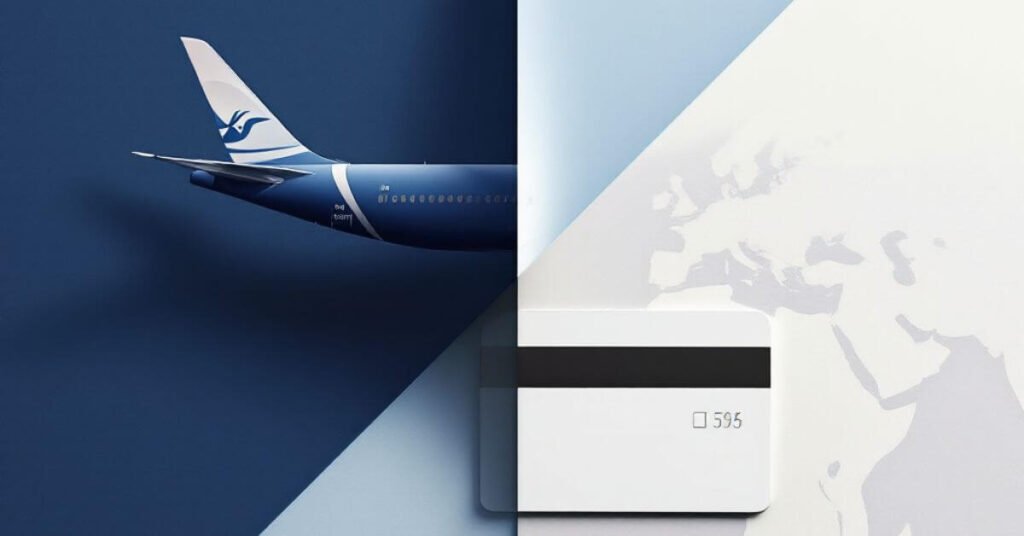If you’re new to the world of travel rewards, one of the first questions you’ll face is: What’s the difference between airline miles and credit card points? While both are valuable tools that can get you closer to free flights, hotel stays, or upgrades, they operate very differently — and knowing those differences is essential for building a smart rewards strategy.
In this article, we’ll break down the core distinctions between airline miles and credit card points, how each one works, their pros and cons, and when to use them.
What Are Airline Miles?
Airline miles are a type of loyalty currency earned through frequent flyer programs run by individual airlines.
You can earn airline miles by:
- Flying with the airline or its partners
- Using co-branded credit cards (like a Delta Amex or United Visa)
- Shopping through airline portals
- Booking hotels or car rentals through affiliated partners
- Participating in promotional offers
Each airline has its own program with its own rules, expiration policies, and redemption charts.
Examples of Popular Airline Miles Programs
- Smiles (GOL)
- LATAM Pass (LATAM)
- MileagePlus (United Airlines)
- AAdvantage (American Airlines)
- SkyMiles (Delta)
- Flying Blue (Air France & KLM)
Airline miles are typically redeemed for flights, seat upgrades, or even vacation packages within that airline’s network and its alliance partners.
What Are Credit Card Points?
Credit card points are rewards earned through spending on general or co-branded credit cards. These points are usually issued by the bank or card issuer, not an airline.
There are two main types of credit card points:
- Bank-issued flexible points: Transferable to multiple loyalty programs or redeemable for cash/travel directly.
- Co-branded card points: Go directly into a specific airline or hotel program.
Examples of Flexible Credit Card Points Programs
- Chase Ultimate Rewards
- American Express Membership Rewards
- Citi ThankYou Points
- Capital One Miles
- Livelo, Esfera, and Átomos (Brazil)
These points can be used to:
- Book travel through the card’s travel portal
- Transfer to airline or hotel programs
- Redeem for gift cards or statement credits
- Purchase merchandise (not recommended due to low value)
Key Differences Between Airline Miles and Credit Card Points
Understanding the differences will help you choose the right strategy based on your travel goals and lifestyle.
1. Flexibility
Airline Miles
- Typically locked to one airline and its partners
- Great if you fly the same airline frequently
- Less useful if award space is limited
Credit Card Points
- Extremely flexible
- Transfer to multiple airlines or hotels
- Use through the card’s travel portal for any airline or route
Winner: Credit Card Points, for maximum flexibility
2. Earning Potential
Airline Miles
- Earned through flying and limited partner offers
- Co-branded cards often earn miles only for airline purchases
- Earning is slower unless you travel often
Credit Card Points
- Earned through everyday spending
- Often offer bonus categories (e.g., 3x at restaurants, 5x on travel)
- Large welcome bonuses with the right card
Winner: Credit Card Points, for daily earning power
3. Redemption Value
Airline Miles
- Can offer amazing value when used strategically (e.g., business class tickets)
- Requires award seat availability
- Often devalued without notice by the airline
Credit Card Points
- Fixed redemption values in travel portals (e.g., 1.25–1.5 cents per point)
- Less potential upside but more predictable
- Transfer to airline programs increases value
Winner: Tie — miles offer higher upside, but points are more predictable
4. Expiration Rules
Airline Miles
- Often expire after 12–36 months of inactivity
- Hard expiration in some programs (e.g., LATAM)
Credit Card Points
- Usually don’t expire as long as you hold the card
- Safer for long-term storage
Winner: Credit Card Points, for easier maintenance
5. Booking Convenience
Airline Miles
- Must be redeemed through the airline or partners
- Award availability varies
- Often complex booking process
Credit Card Points
- Book directly through the card’s portal like Expedia
- No blackout dates or award seat limitations
- Easier for beginners
Winner: Credit Card Points, for simplicity and access
When to Use Airline Miles
Airline miles shine when used for high-value redemptions such as:
- International business or first-class flights
- Long-haul international economy flights
- Award tickets with low surcharges
- Partner airline redemptions with fixed award charts
Example
Fly from New York to Tokyo in business class:
- Cash fare: $4,800
- Award: 75,000 American AAdvantage miles + $60 in taxes
- Value per mile: 6.3 cents — excellent value
If you have flexible dates and a specific route, airline miles are unbeatable.
When to Use Credit Card Points
Credit card points work best when:
- You want to book travel without award restrictions
- You want to pay for low-cost economy tickets
- You’re topping off an account through point transfers
- You value ease and convenience over maximizing every cent
Example
Book a $350 ticket via Chase Travel:
- Use 28,000 points (at 1.25 cents/point with Chase Sapphire Preferred)
- No blackout dates, no award seat restrictions
- Earn miles on the flight too!
Credit card points simplify the booking process and are ideal for last-minute trips or complex itineraries.
Combining Both for a Stronger Strategy
You don’t need to choose one over the other — the most powerful rewards strategies use both airline miles and credit card points together.
Example Strategy
- Use your Amex Membership Rewards card to earn flexible points
- Transfer them to Air France Flying Blue during a 25% bonus promotion
- Redeem for a business class flight from São Paulo to Paris
This way, you combine:
- Daily earning power of a credit card
- High-value redemption potential of airline miles
- Bonus value from transfer promotions
Common Mistakes to Avoid
- Redeeming credit card points for merchandise or gift cards — low value
- Letting airline miles expire without tracking them
- Transferring points without confirming award space first
- Using airline miles for cheap domestic tickets instead of cash
Always evaluate the redemption value before using your rewards.
Final Thoughts: Know the Difference, Use Them Wisely
Understanding the differences between airline miles and credit card points is key to building a successful travel rewards strategy. Each has its strengths:
- Airline miles are perfect for aspirational flights and elite status seekers
- Credit card points offer unmatched flexibility and are easy to earn
Use them strategically, combine their strengths, and you’ll open the door to affordable — and unforgettable — travel experiences.
Elaine A. da Silva is a Brazilian travel and finance enthusiast, best known as the creator of the blog Dica das Milhas. With a strong background in personal finance and a passion for exploring smart travel strategies, she specializes in simplifying the world of airline miles and travel rewards for everyday people. Through her blog, Elaine shares practical tips, insider knowledge, and step-by-step guides to help readers save money and travel more efficiently using loyalty programs and credit card points.







